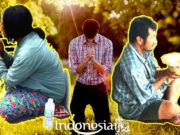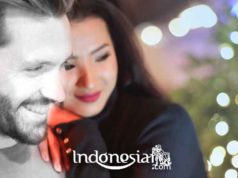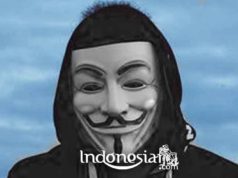Timor Leste is a country that has a strong influence from Portuguese culture in Asia. Even though it was once a province in Indonesia under the name East Timor, the Portuguese culture is still strong there.
According to a well-known tale in Timorese culture, crocodiles are believed to be great-grandparents, kings of ancestors, kings of waters and kings of mountains. Crocodile is part of the Timor creation story which tells the story of a boy who saves a crocodile from death
In return the crocodile offered to carry the boy on his back on an adventure in the sea. But the crocodile was lost and hungry and wanted to eat the boy, but he didn’t do it in the name of his debt to the boy. When they reached the area where the sun was rising in the east, the crocodile became the mainland which is now the island of Timor.
Therefore, it is said that this island is shaped like a crocodile with steep mountains like a crocodile’s back.
José Celestino da Silva, former governor of the colony of Timor-Leste, was one of the first to publish a text on Timor-Leste customs in 1896. Subsequently, governor Eduardo Marques, in 1908, and Baptista Justo, in 1932, attempted to create usage and customs code, but to no avail. In this context, one of the most relevant works is Gentio de Timor, by Armando Pinto Corrêa in 1935.
Weaving baskets, mats and the like (cloth woven with traditional Timorese stripes) is a tradition that dates back hundreds of years among women in Timor. In fact, textile production has a long history.
On the island of Ataúro, the Maquile people have a tradition of carving wood. Initially they produced male and female costumes, dance masks, mermaids and eels. Influenced by the Portuguese and the Catholic Church, costumes began to cover the genitals and figures inspired by Christ.
The leader of the Timorese resistance, Xanana Gusmão, is also the biggest name in the country’s poetry. In 1973, even before the Flower Revolution, Xanana Gusmão was already prominent in literature, even receiving the Revelation Award for Foreign Poetry. However, the Timor Civil War, which began in 1975, aroused Gusmão’s need to express himself through writing.
Between 1977 and 1979, he published two books: “Homeland and Revolution” (whose title would be the slogan of the country’s struggle), and “War, the Basic Theme of Our Time”, in which he practiced all the characteristics of the so-called Popular War. , describes the role of a charismatic leader in leading his people.
The book “Mar Meu”, from 1998, collects several poems by Xanana written in the period 1994 and 1996. Xanana’s poems conquered literary criticism in Portuguese, and the revolutionary work was widespread in countries such as Angola, Guinea – Bissau, Mozambique and Portugal.
Xanana Gusmão was also a strong exponent of Timorese painting, developing this activity especially while in prison. The canvas focuses on the depiction of the Timorese landscape, focuses on their traditions, the simple ways of the people, their happiness. His most famous painting is “Aldeia Típica de Timor”.
Other important Timorese writers are: Luís Cardoso, Fernando Sylvan, Jorge Lauten, Francisco Borja da Costa, Jorge Barros Duarte, João Aparício, Ponte Pedrinha – the pseudonym of Henrique Borges, Fitun Fuik and Afonso Foam Methane. Poems, fairy tales and chronicles from some of these authors are compiled in the book “Timor Lorosae – This Country Wants to Be Free”, compiled by Sílvio Sant’Anna, of Editora Martin Claret. A Portuguese writer who lived in Timor for several years and produced high-quality works is Ruy Cinatti, poet, anthropologist and botanist.
By Government Resolution no. 30, 29 October 2014 National Culture Day, the government of Timor Leste in accordance with the provisions of point “d” article 116. The Constitution of Timor, declared as National Culture Day on 14 October, in honor of the poet Francisco Borja da Costa.
Source : wikipedia





























